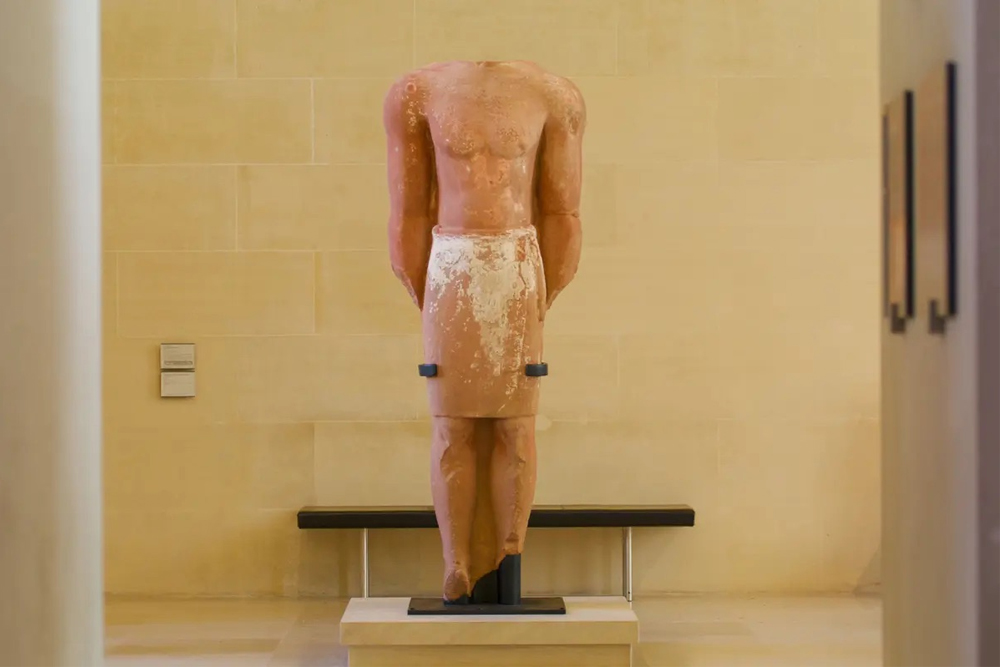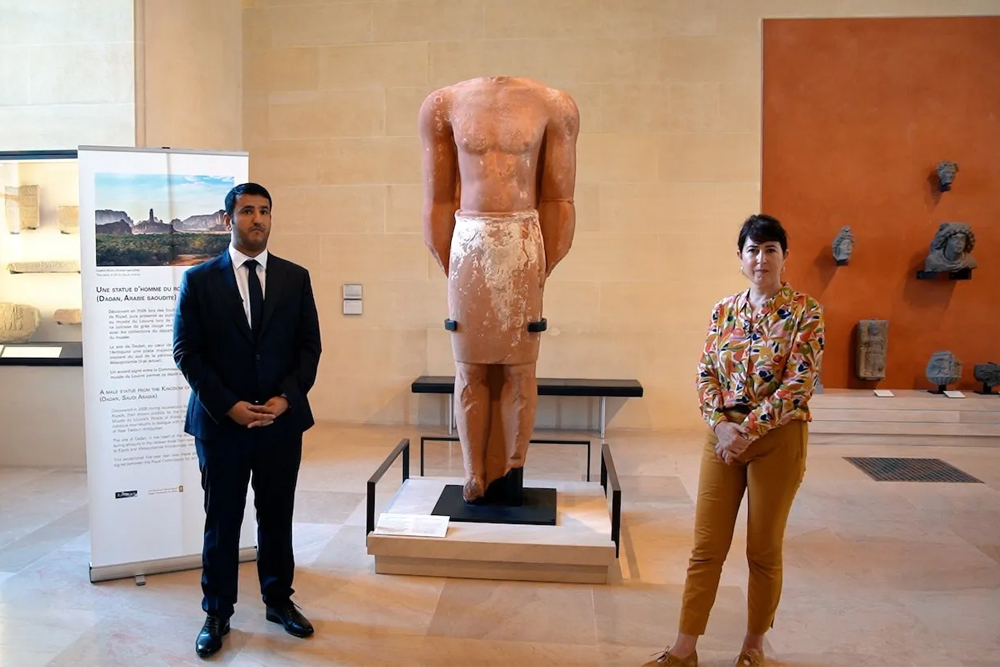
The Lihyanite ancient civilization resided in the northwestern region of Saudi Arabia and has just been unveiled at the Louvre Museum in Paris. Archaeologists say that it dates back to the 5th to 3rd centuries BCE and measures 2.3 meters in height. The statue represents a rendering of a masculine figure standing straight and simply facing forward with its arms aligned on both sides and legs straight. The ancient relic, who is carved from sandstone and weighs in at 800kg, is missing its head and was probably a depiction of an important figure of its time, judging by its size.
The statue was unveiled at the Louvre in Paris on Tuesday 6th September 2022 in the museum’s hall of Oriental Antiquities – this was a significant moment in marking the beginning of a collaboration between French museums of heritage and the Royal Commission for Al Ula (RCU).

“The statue is a very important symbol of France’s cultural cooperation with Saudi Arabia,” Laurence des Cars, director of the Louvre Museum, told a local publication. “It is a masterpiece of ancient sculpture that testifies to the archaeological research undertaken by the Kingdom of Saudi Arabia for over 20 years, often in collaboration with France. We are very happy to be able to present for five years to visitors to the Louvre this masterpiece in the context of our collections of the Arabian Peninsula. It stands as a strong symbol of this collaboration.”
The Dadan archaeological site in Al Ula is the location where the status was unearthed during diggings directed by teams from the King Saud University in Riyadh from 2003 to 2019. The relic is said to date back 2,800 years, when Dadan was one of the most important trade route stations of the ancient world. It was in the second half of the 1st millennium BCE that the Dadan kingdom was ruled by the kings of the Lihyan tribe. This tribe are reported to have reigned for many centuries.

“This is the first Lihyanite statue found in northwestern Saudi Arabia that will be exhibited for five years at the Louvre after an official agreement between the Louvre and the RCU,” commented Dr. Abdulrahman Alsuhaibani, acting collections executive director for the RCU.
He also added that another statue was found and is almost the same as the one unveiled at the Louvre in Paris, but currently being examined and restored.
“We recovered the statue, we managed to stabilize it, and now we are working and making efforts to conserve it before putting it on display during the exhibition,” said Alsuhaibani.
Several colossal statues, believed to depict kings and priests, were discovered between 2005 and 2007 during archaeological excavations of the sanctuary of Dadan led by researchers from King Saud University.

















